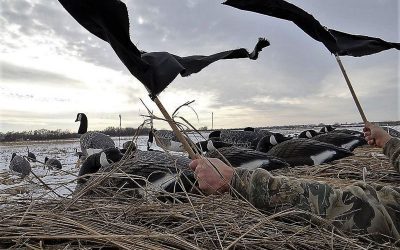Reprinted from Ducks Unlimited
Memphis, Tenn. – July 2, 2015 – The U.S. Fish and Wildlife Service (FWS) today released its report on 2015 Trends in Duck Breeding Populations, based on surveys conducted in May and early June by FWS and the Canadian Wildlife Service. Overall duck numbers in the survey area are statistically similar to last year and remain strong. Total populations were estimated at 49.5 million breeding ducks in the traditional survey area, which is 43 percent above the 1955-2014 long-term average and the highest count on record. Last year’s estimate was 49.2 million birds.
View all the data and get a species-by-species breakdown at www.ducks.org/DuckNumbers.com.
“We are fortunate to see continued high overall duck populations in North America’s breeding areas this year,” said DU CEO Dale Hall. “Though conditions were dry in some important habitats, we had large numbers of birds returning this spring and good conditions in the Boreal Forest and other areas of Canada. It looks like some typical prairie nesters skipped over the U.S. prairies and took advantage of good conditions farther north. This is an important reminder about the critical need for maintaining abundant and high-quality habitat across the continent. The Boreal Forest, especially, can provide important habitat when the prairies are dry. But the Boreal is under increasing threats from resource extraction.”
The main determining factor for duck breeding success is wetland and upland habitat conditions in the key breeding landscapes of the prairies and the Boreal Forest. Conditions observed across the U.S. and Canadian survey areas during the 2015 breeding population survey were drier than last year. Total pond counts for the U.S. and Canada combined were 6.3 million, which is 12 percent below the 2014 estimate of 7.2 million and 21 percent above the long-term average.
“An early spring balanced with poorer habitat conditions was apparent in this year’s survey,” said DU Chief Conservation Officer Paul Schmidt. “In addition to reduced precipitation over the winter and early spring, we have lost critical nesting habitat with the decrease in Conservation Reserve Program lands and continuing conversion of habitat to agricultural production across the U.S. prairies. Fortunately, these conditions had minimal impacts on this year’s overall breeding bird numbers, but hunters should be concerned about these trends and what they might mean in future years. We have experienced good moisture in the prairies and liberal bag limits for more than two decades. Continuing habitat losses and drier conditions have the potential to change this scenario in the future.”
The spring surveys provide the scientific basis for many management programs across the continent, including hunting season dates and bag limits. The four flyway councils and the U.S. Fish and Wildlife Service Regulations Committee will meet in late July to recommend the season structure and bag limits for 2015-16. Individual states will make their specific selections within a federal framework of season length, bag limits and dates. Hunters should check the rules in their states for final dates.
Species estimates are:
- Mallards: 11.6 million, which is similar to the 2014 estimate and 51% above the long-term average.
- Gadwall: 3.8 million, which is similar to the 2014 estimate and 100% above the long-term average.
- American wigeon: 3.0 million, which is similar to the 2014 estimate and 17% above the long-term average.
- Green-winged teal: 4.1 million, which is 19% above the 2014 estimate and 98% above the long-term average.
- Blue-winged teal: 8.5 million, which is similar to the 2014 estimate and 73% above the long-term average.
- Northern shovelers: 4.4 million, which 17% below the 2014 estimate and 75% above the long-term average.
- Northern pintails: 3.0 million, which is similar to the 2014 estimates and 24% below the long-term average.
- Redheads: 1.2 million, which is similar to their 2014 estimate and 71% above the long-term average.
- Canvasbacks: 0.76 million, which is similar to the 2014 estimate and 30% above the long-term average.
- Scaup: 4.4 million, which is similar to the 2014 estimate and 13% below the long-term average.
- Black ducks (Eastern Survey Area): 541,000, which is 11% below the 2014 estimate and 13% below the long-term average.
View all the data and get a species-by-species breakdown at www.ducks.org/DuckNumbers.com.
Ducks Unlimited Inc. is the world’s largest nonprofit organization dedicated to conserving North America’s continually disappearing waterfowl habitats. Established in 1937, Ducks Unlimited has conserved more than 13 million acres thanks to contributions from more than a million supporters across the continent. Guided by science and dedicated to program efficiency, DU works toward the vision of wetlands sufficient to fill the skies with waterfowl today, tomorrow and forever. For more information on our work, visit www.ducks.org. Connect with us on our Facebook page at facebook.com/DucksUnlimited, follow our tweets at twitter.com/DucksUnlimited and watch DU videos at youtube.com/DucksUnlimitedInc.





0 Comments